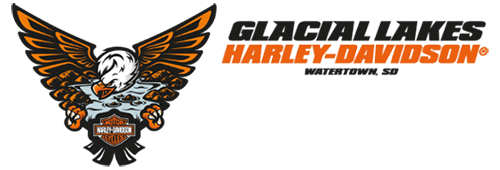April is Check Your Helmet Month
The rest of the world may think of April as "tax filing month" but the team here at J&L Harley-Davidson celebrates National Check Your Helmet Month throughout April.
We want our customers to protect their noggin. It's not enough to wear a helmet, you also need to make sure that it is functional, well-fitting, and able to do its job properly. Helmets should be replaced every three to five years. If it's older, it's time for a new helmet, no matter how spiffy it may appear. Helmets are manufactured to be highly durable, but they do have a definite lifespan. If your helmet has experienced an impact, it should be replaced sooner. A helmet is designed for just ONE impact, so even if there aren't any scratches or damages done to the outside, it should still be replaced right away.
If your helmet is less than five years old - and you can check the date written in the liner - you should inspect it carefully to ensure it protects you as it should. If you have any questions, allow the J&L Harley-Davidson team to guide the way and help you out!
A helmet must fit properly to be effective, and not all helmets fit the same. A well-fitting helmet should rest one inch above your eyebrows and shouldn't roll forward or sideways on your head. To ensure a comfortable fit that doesn't squeeze too tightly, wear a helmet for 15 minutes before making a final buying decision. Our Motorclothes experts at J&L Harley-Davidson are trained in fitting helmets. Make sure to stop out and see them and our selection of half, 3/4, and full-face helmets.
YOUR HELMET DESERVES A THOROUGH INSPECTION
- Inspect the condition of the EPS liner. Located at the top of the inner helmet, expanded polystyrene foam consists of plastic beads and air bubbles, pressed very tightly together. The foam is designed to absorb shocks, but it is not indestructible, either. Even a slight bump can compromise its structural integrity. look for cracks, rips, and other signs of wear and tear. if you see anything suspicious, it is time for a new helmet.
- Check the outer shell of the helmet. One reason that helmets have relatively short life spans is that they are designed to sustain only one impact; even a small one can fracture the shell and compress the EPS liner. A crack is a definite call for a new helmet. The second reason is the helmets are exposed to a bevy of harsh outdoor elements. The sun is the most blistering, but not always the most punishing. Rain, fog, exhaust fumes, gas fumes, and even insect repellents can degrade a helmet's protective qualities. if you are in doubt, error on the side of caution and replace your helmet.
- Put on your helmet and look at yourself in the mirror from all vantage points. Ensure that your helmet isn't warped or otherwise losing its shape. if it is, it should be replaced with one that fits properly so that it fully protects you on the road.
- Remove the comfort liner (if it is in facet removable) and look at its condition. Was it in a washing machine on the gentle cycle - something you should be prepared to do more often if your hair is oily or you use a lot of hair products? If your liner is non-removable, massage it with soapy water until it is clean.
- Ensure that you are cleaning your outer helmet properly. Follow the care instructions that came with your helmet, and be sure to wash it after long rides in particular. If you've been negligent in the past, national Check Your Helmet Month is a fine time to start new habits to keep your helmet in peak condition.
Another tip to note is to make sure you store your helmet correctly. Leaving your helmet in the garage with fluctuating climates can be terrible on your helmet. When the weather swings from 100 degrees in the summer to -20 in the winter, the helmets integrity gets questioned as it swells and shrinks in the Midwest weather pattern.
Don't hesitate to bring your helmet and your questions to our team!

